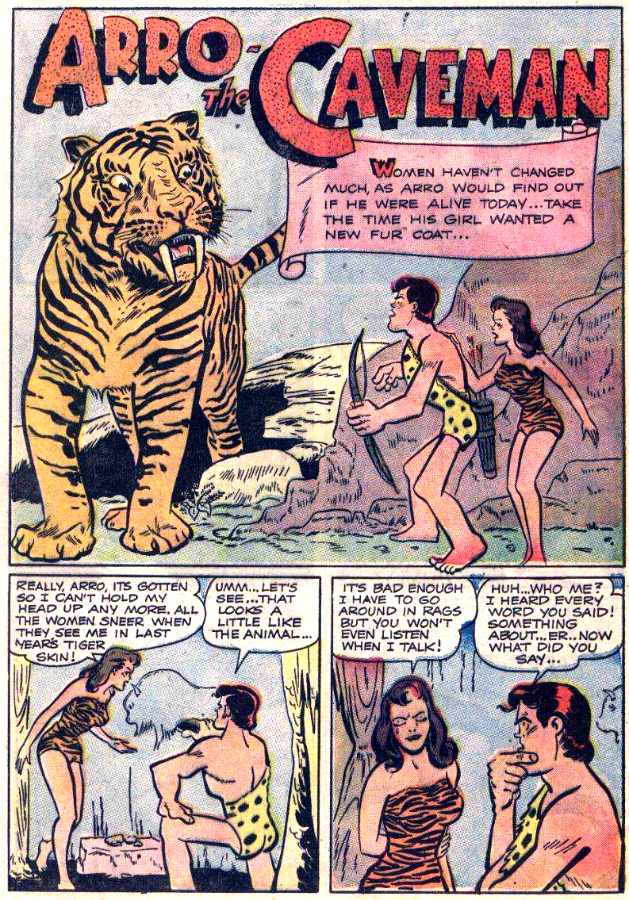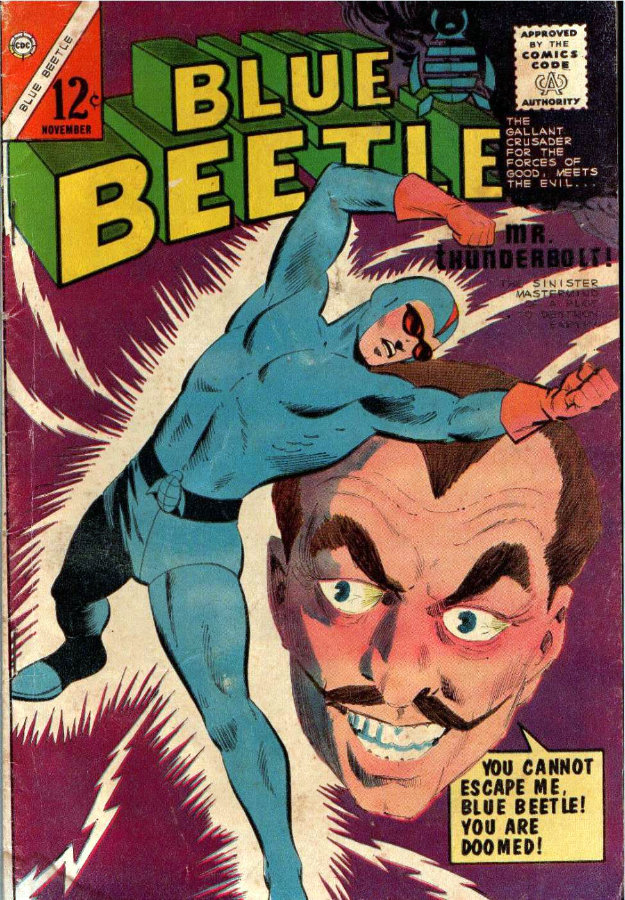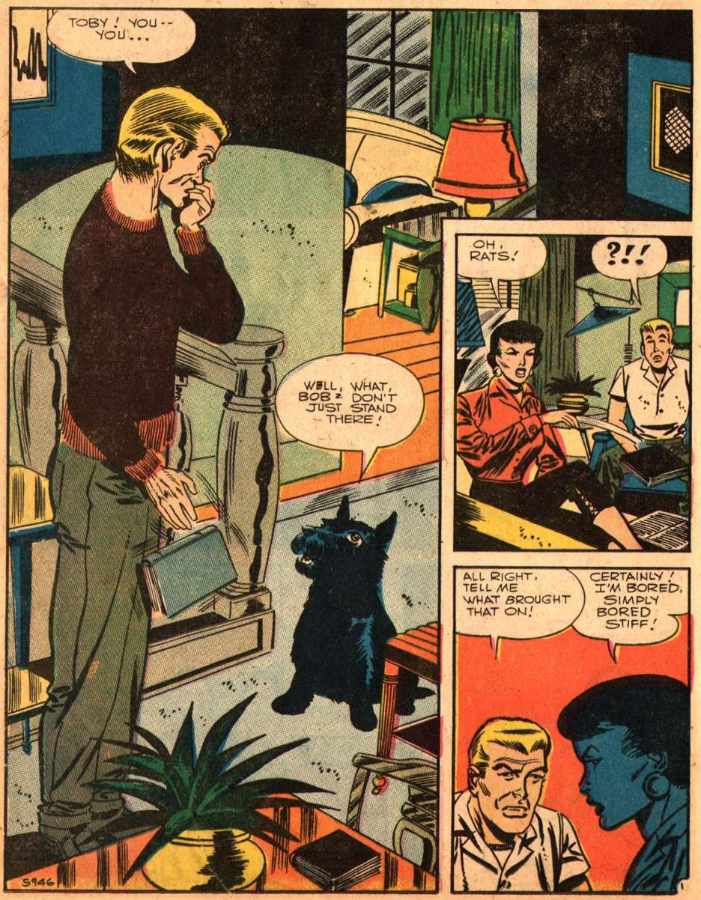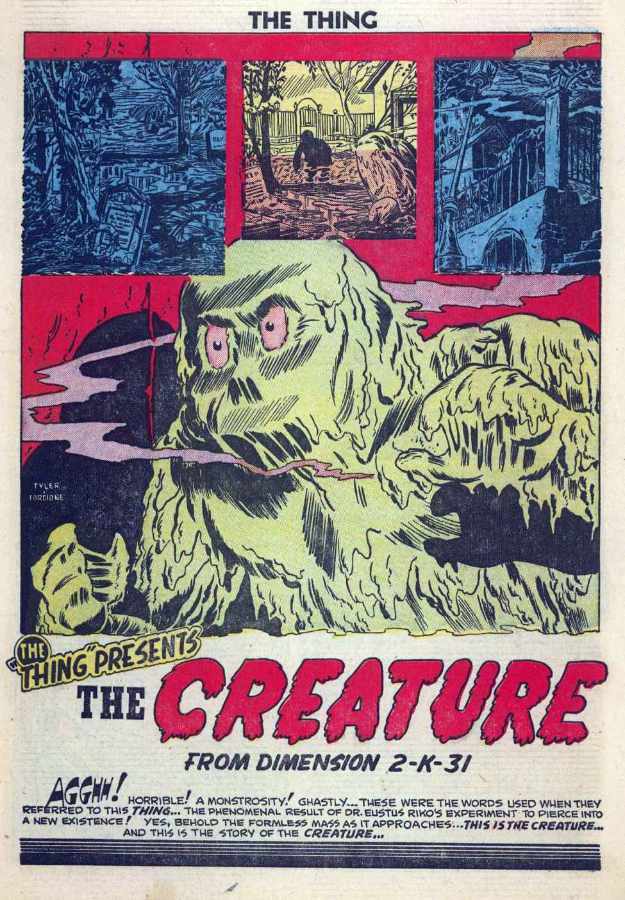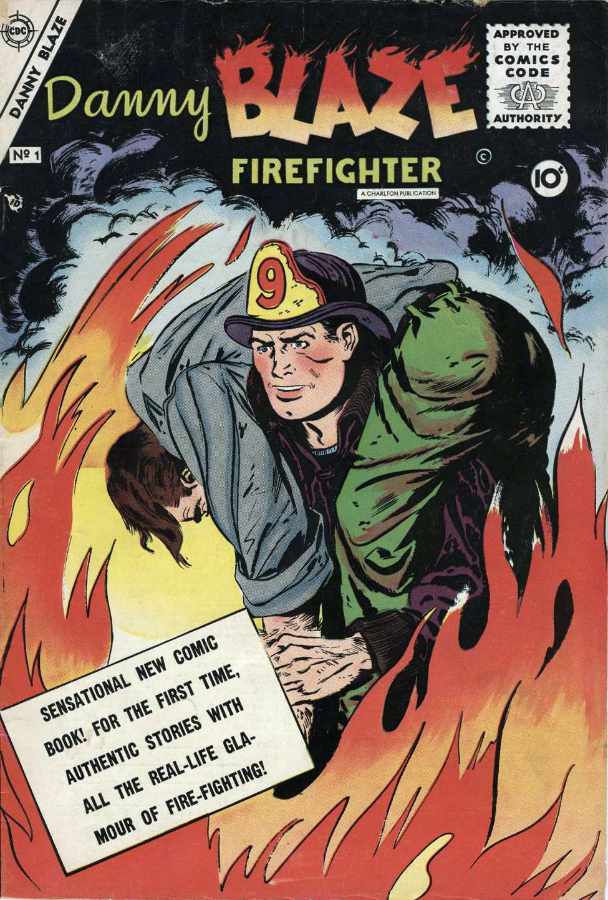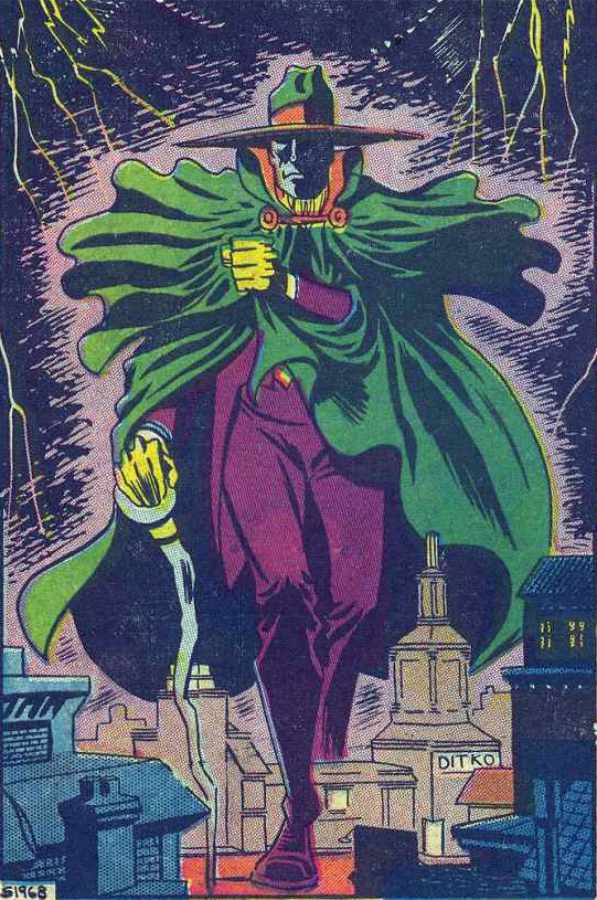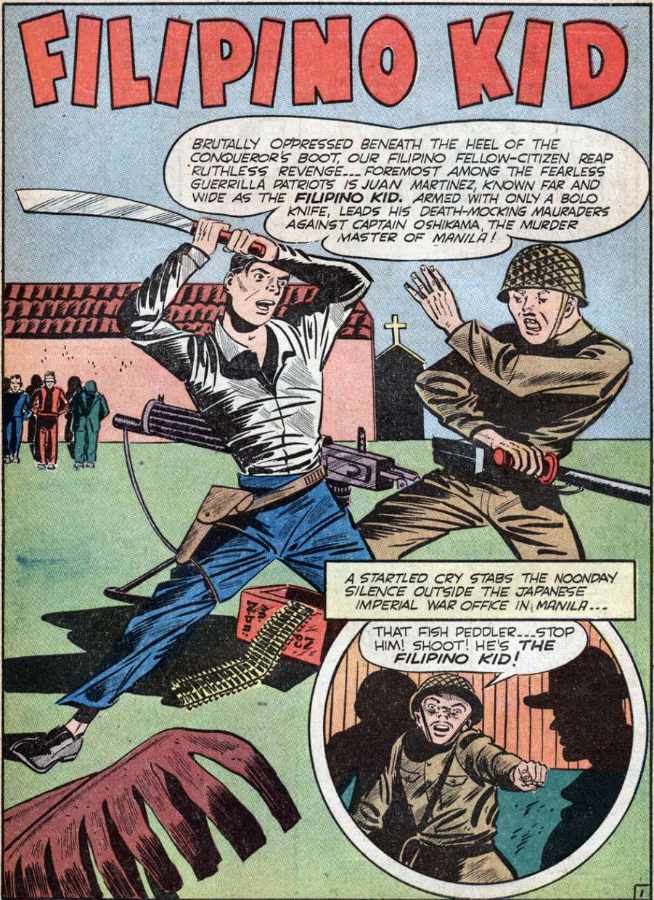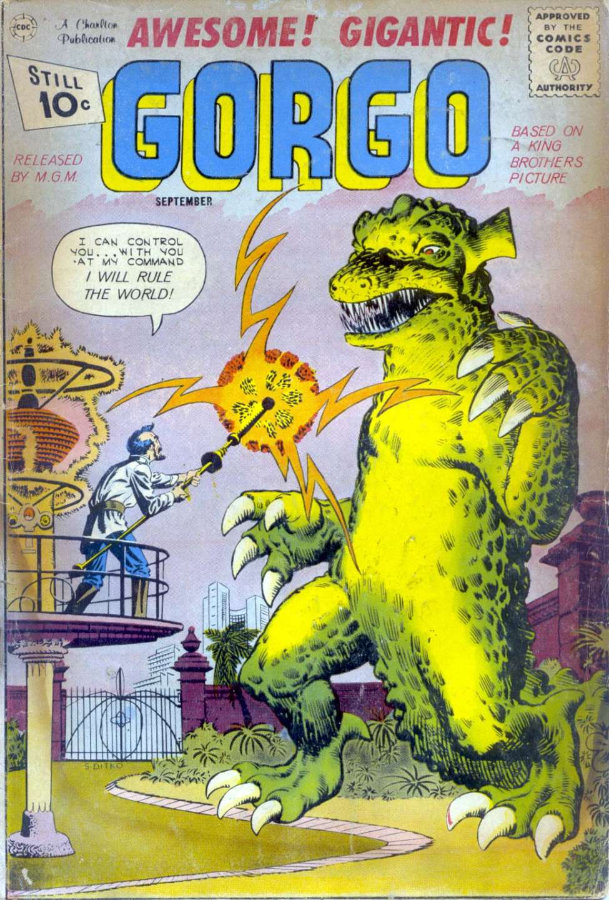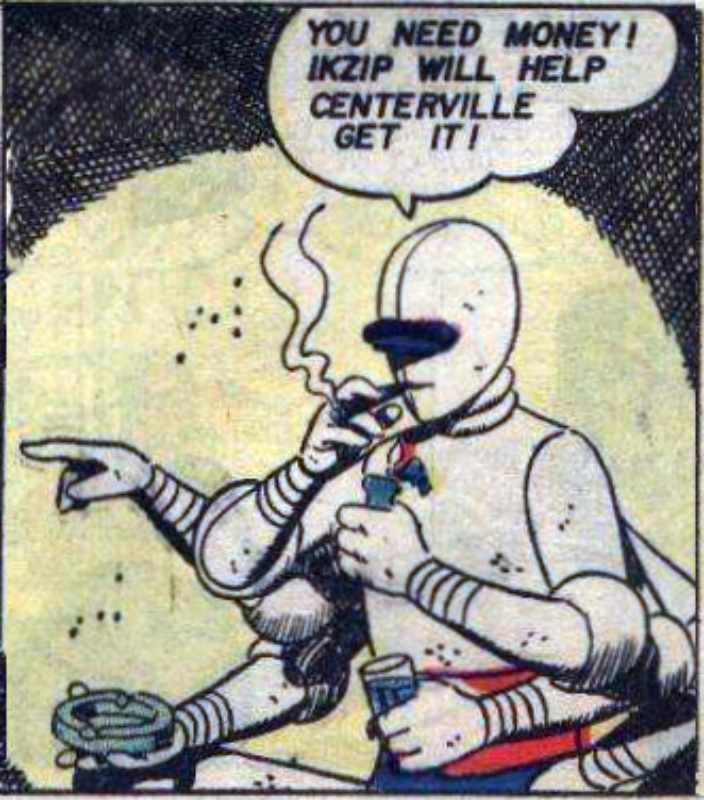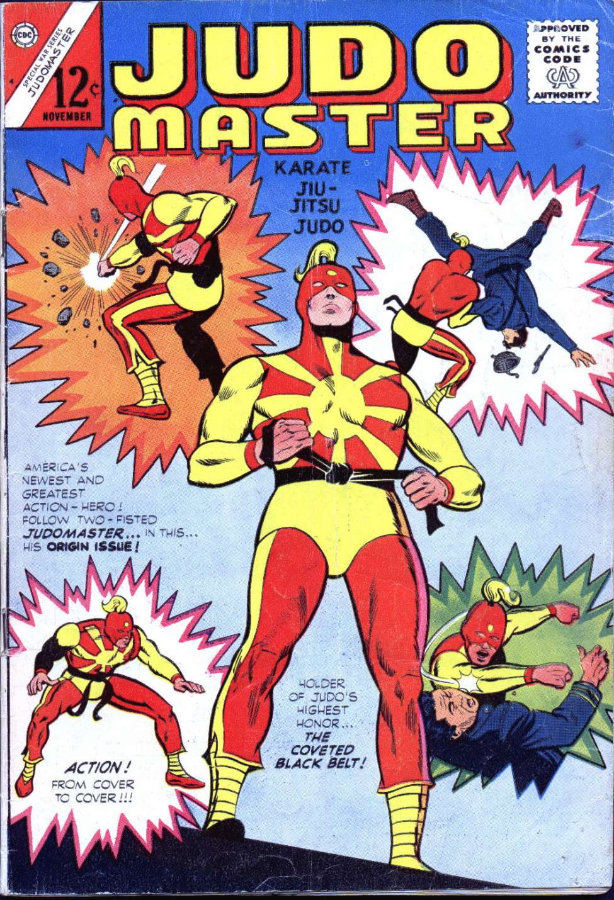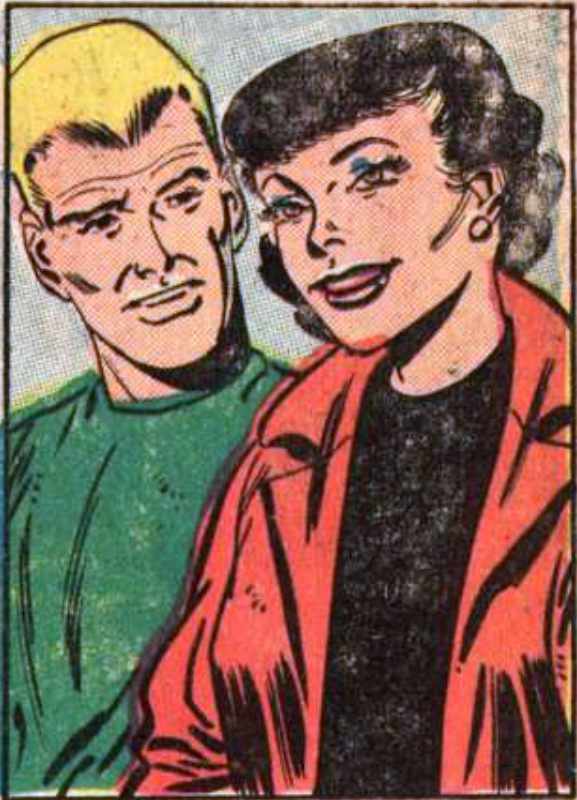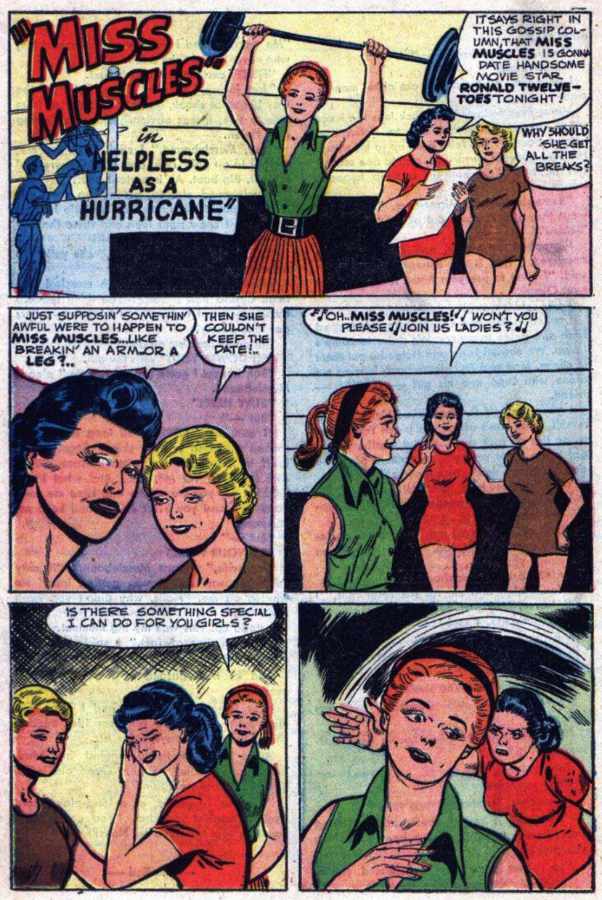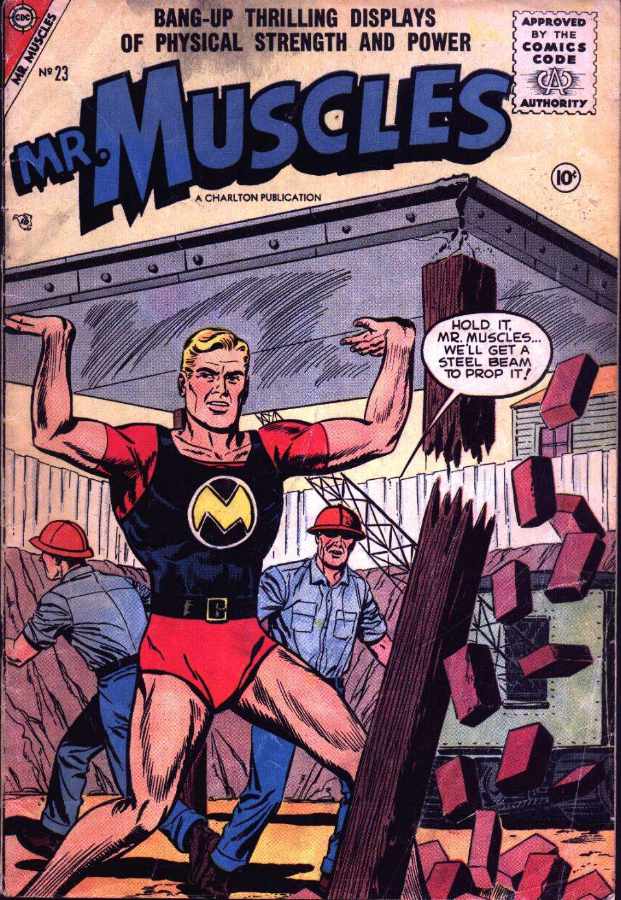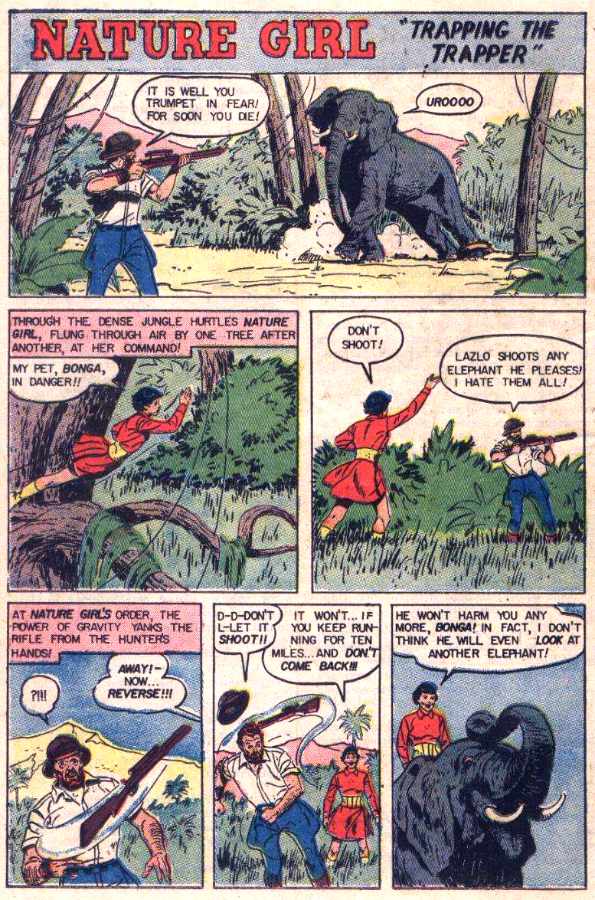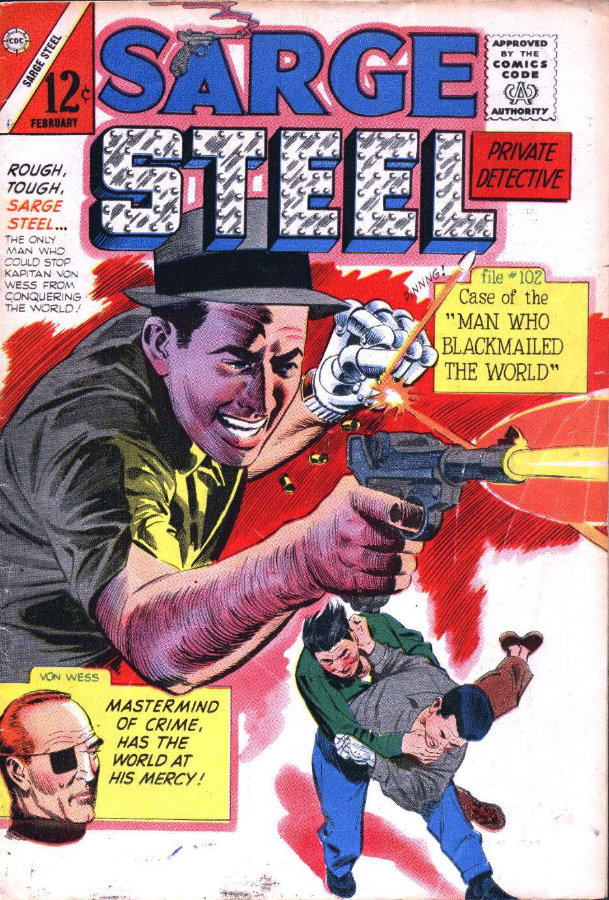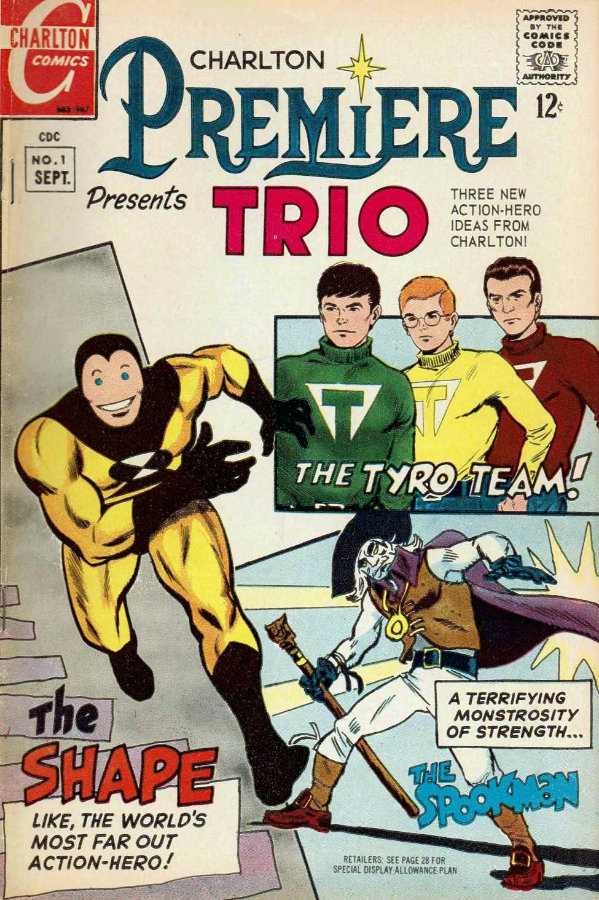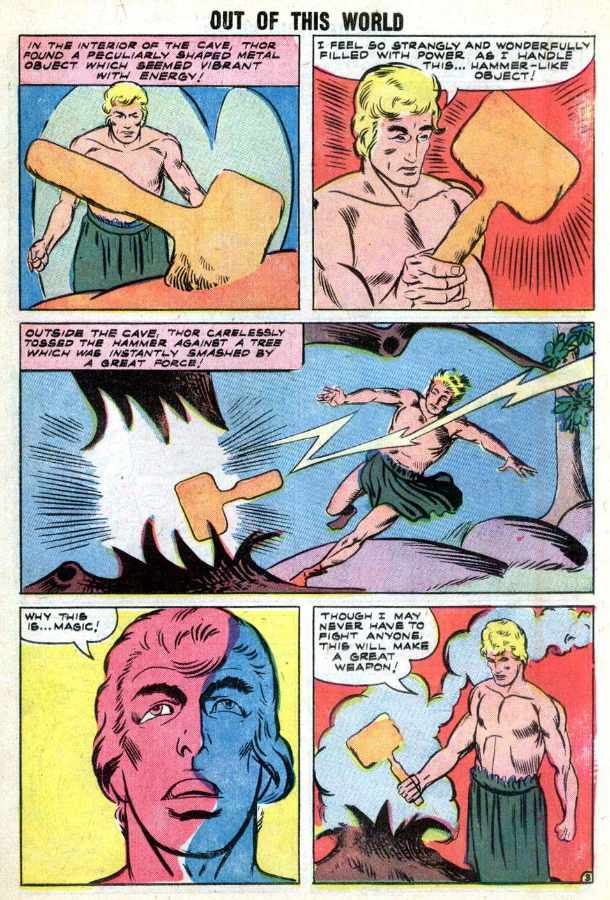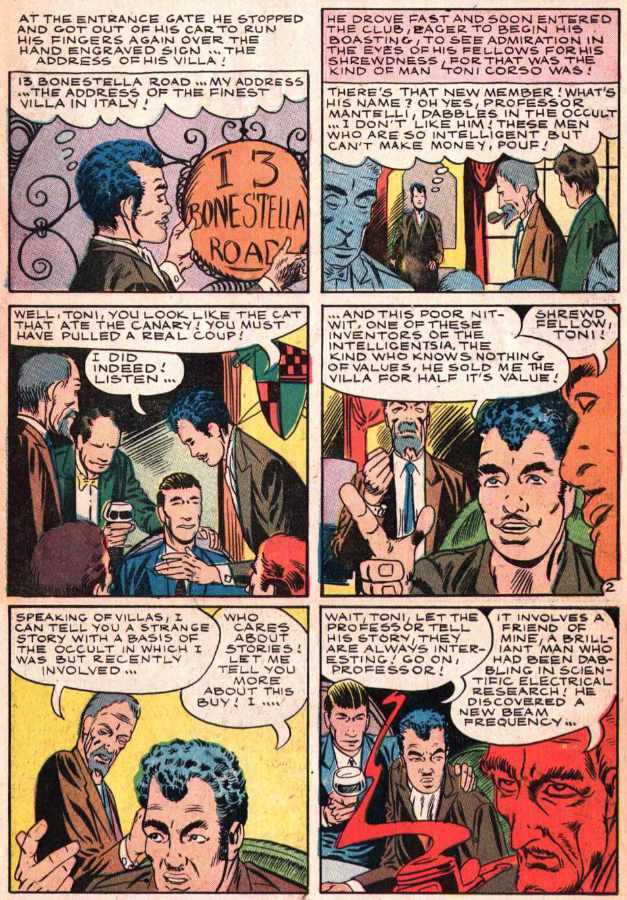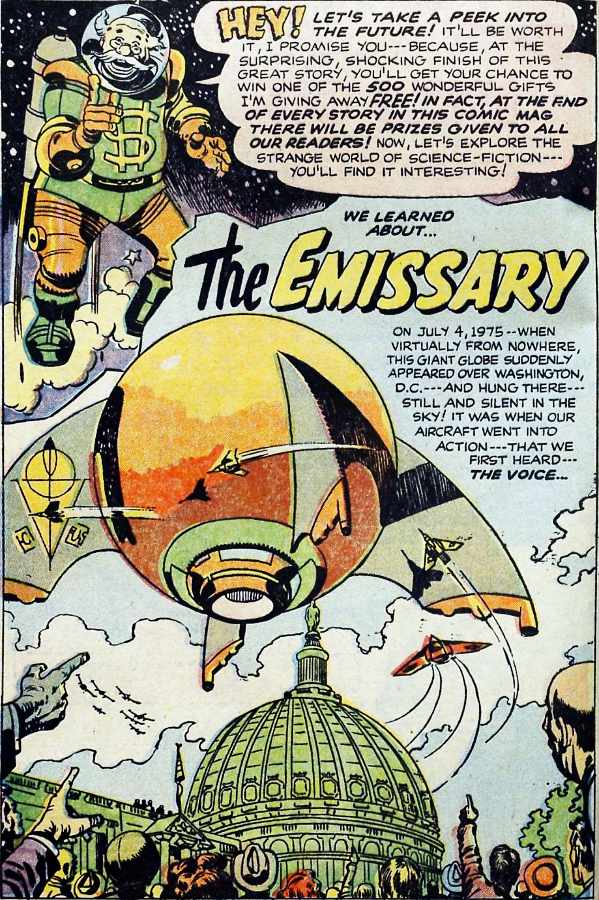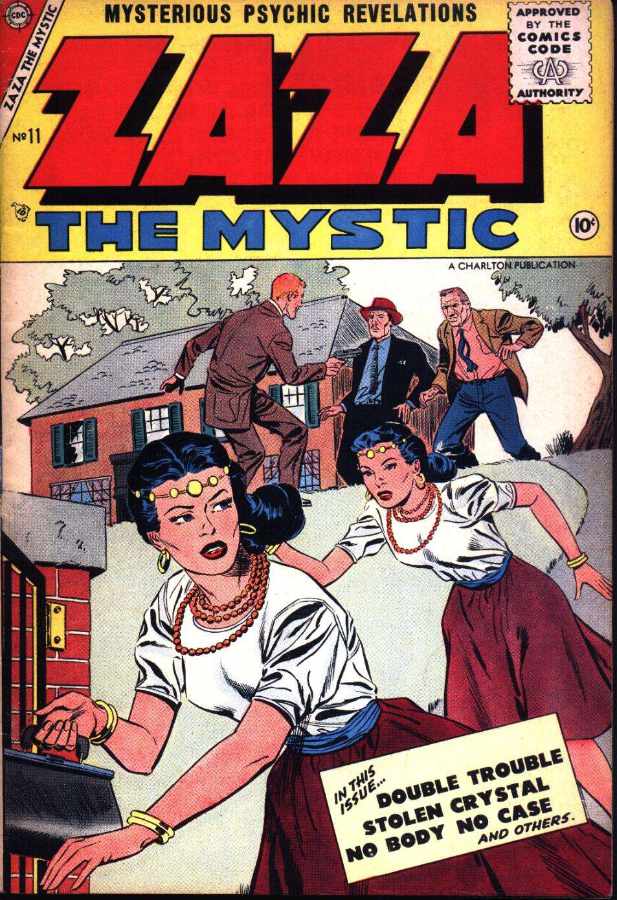| Club Charlton (Earth-based) |
| Total Entries 35 |
| Representative Captain Atom (Charlton) |
|
The company was formed by John Santangelo Sr. and Ed Levy in 1940 as T. W. O. Charles Company, named after the co-founders’ two sons, both named Charles, and became Charlton Publications in 1945. In 1931, Italian immigrant John Santangelo Sr., a bricklayer who had started a construction business in White Plains, New York, five years earlier, began what became a highly successful business publishing song-lyric magazines out of nearby Yonkers, New York. Operating in violation of copyright laws, however, he was sentenced in 1934 to a year and a day at New Haven County Jail in New Haven, Connecticut, near Derby, where his wife and he by then lived. In jail, he met Ed Levy… Santangelo and Levy opened a printing plant in Waterbury the following year, and in 1940, founded the T.W.O. Charles Company, eventually moving its headquarters to Derby. Following the adoption of the Charlton Comics name in 1946, the company over the next five years acquired material from freelance editor and comics packager Al Fago (brother of former Timely Comics editor Vincent Fago). The company used a second-hand press originally used for printing cereal boxes. These large presses were very costly to both stop and start, which only happened twice a year when they had to be cleaned, and so they started publishing comics as a mean to keep the presses going. After the entry into the comic business, the company’s first comic book was Yellowjacket, an anthology of superhero and horror stories launched September 1944… In 1951, when Al Fago began as an in-house editor, Charlton hired a staff of artists who included its future managing editor, Dick Giordano. Others (staff or freelance) who eventually worked with Charlton included Vince Alascia, Jon D’Agostino, Sam Glanzman, Rocco “Rocke” Mastroserio, Bill Molno, Charles Nicholas, and Sal Trapani. The primary writer was the remarkably prolific Joe Gill. The same year the company created an in-house comics department, where comics would make up 25% of Charlton. The company began a wide expansion of its comics line. In 1954–55, it acquired a stable of comic-book properties from the defunct Superior Comics, Mainline Publications, St. John Publications, and most significantly, Fawcett Publications, which was shutting down its Fawcett Comics division. Charlton continued publishing two of Fawcett’s horror books—This Magazine Is Haunted and Strange Suspense Stories—initially using unpublished material from Fawcett’s inventory. Artistic chores were then handed to Ditko, whose moody, individualistic touch came to dominate Charlton’s supernatural line. Superheroes were a minor part of the company. At the beginning, Charlton’s main characters were Yellowjacket, not to be confused with the later Marvel character, and Diana the Huntress. In the mid-1950s, Charlton briefly published a Blue Beetle title with new and reprinted stories, and in 1956, several short-lived titles written by Superman co-creator Jerry Siegel, such as Mr. Muscles, Zaza the Mystic, and Nature Boy (the latter with artist Mastroserio). The company’s most noteworthy period was during the “silver age” of comic books, which had begun with DC Comics’ successful revival of superheroes in 1956. In March 1960, Charlton’s science-fiction anthology title Space Adventures introduced Captain Atom, by Gill and the future co-creator of Marvel Comics’ Spider-Man, Steve Ditko. ~ Charlton Comics – Wikipedia
|




